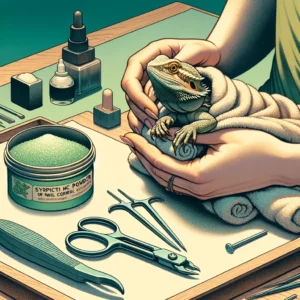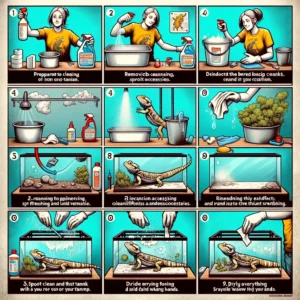Creating an ideal environment for bearded dragon hatchlings is crucial for their health and growth. This guide provides an in-depth look into setting up the perfect habitat for your new pets, ensuring they thrive from the very beginning.
Understanding Bearded Dragon Hatchlings
Before diving into the setup, it’s essential to understand bearded dragon hatchlings. These reptiles, native to Australia, go through a critical growth phase after hatching. This period is vital for their development, and the care they receive can significantly impact their health and longevity.
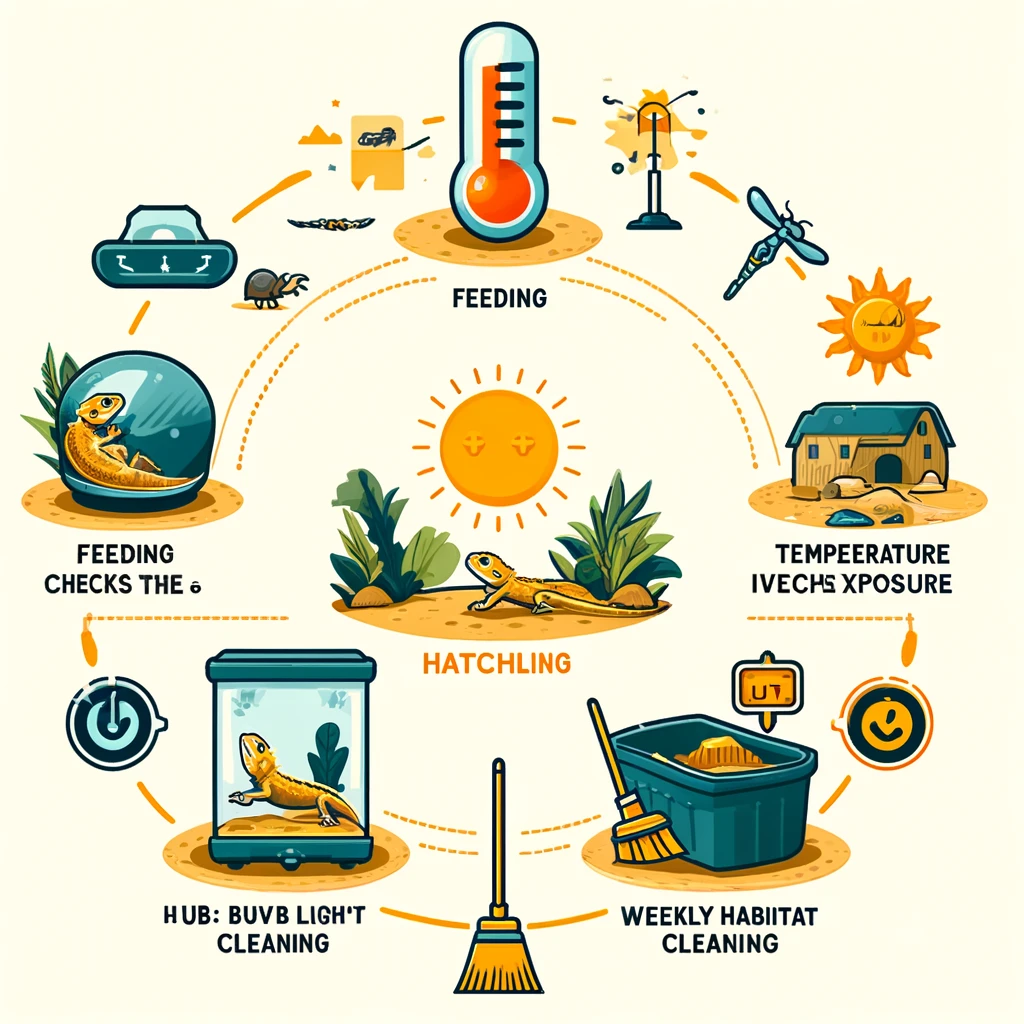
Initial Setup
Habitat Size and Type
For hatchlings, a 20-gallon tank is sufficient. It provides ample space for them to explore without being so large that they cannot find their heat source or food. As they grow, you’ll need to upgrade the tank size accordingly.
Substrate
Choose a substrate that’s safe and easy to clean. Newspaper, paper towels, or reptile carpet are excellent choices for hatchlings. Avoid sand or small gravel, as these can cause impaction if ingested.
Temperature and Lighting
Hatchlings require a basking spot with a temperature between 95-110°F and a cooler area around 85°F. Use a reliable digital thermometer to monitor these temperatures. UVB lighting is also essential for their development, ensuring they absorb calcium properly to prevent metabolic bone disease.
Humidity
Maintain the humidity level between 20-40%. Too much humidity can lead to respiratory infections, while too little can cause dehydration. A digital hygrometer can help you keep track of humidity levels.
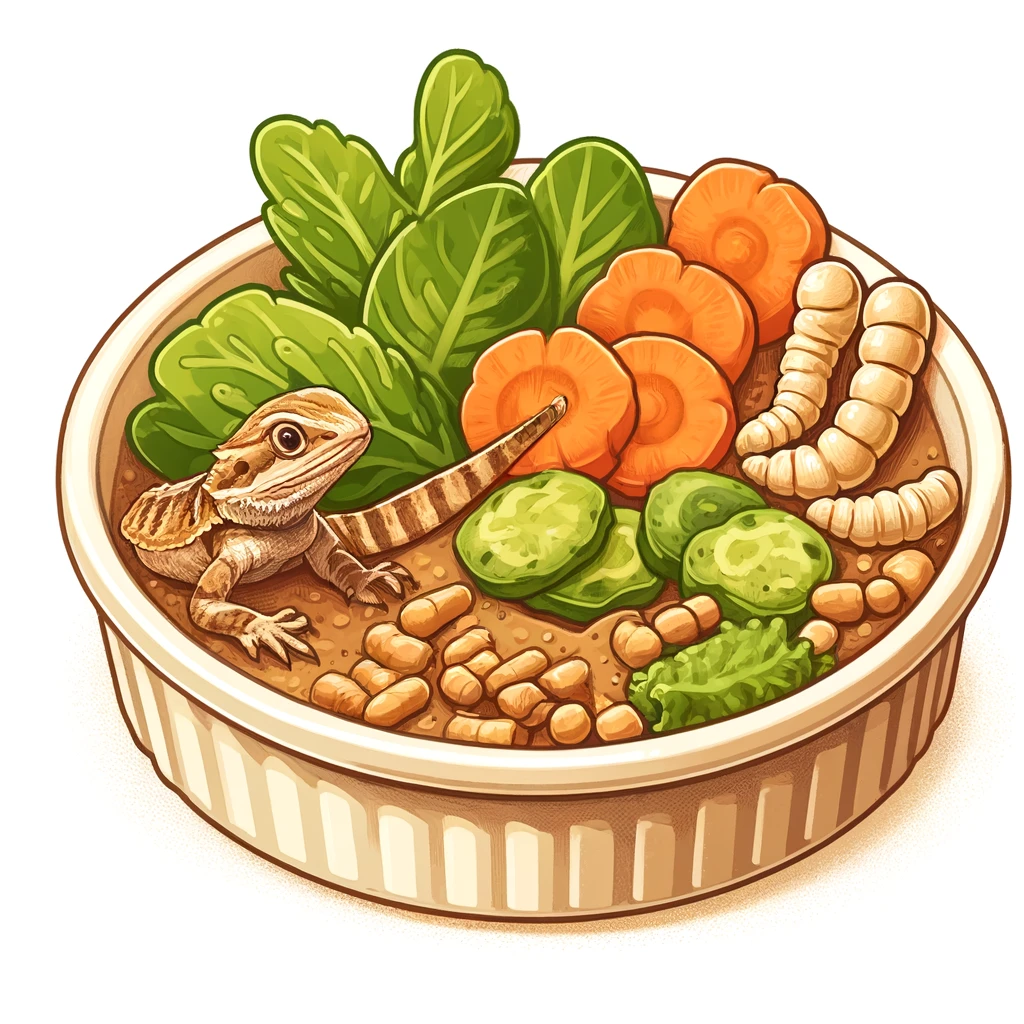
Feeding Your Hatchlings
Bearded dragon hatchlings are voracious eaters, requiring a diet rich in protein to support their rapid growth. Offer small crickets, mealworms, and a variety of vegetables. Calcium and vitamin D3 supplements are also crucial to prevent nutritional deficiencies.
Daily and Weekly Care Schedule
A consistent care schedule ensures your hatchlings remain healthy and happy. This includes daily feeding, spot cleaning, and weekly deep cleaning of their habitat. Regular handling can also help in taming your hatchlings and monitoring their health.
Potential Health Issues
Be aware of common health issues such as metabolic bone disease, impaction, and dehydration. Early detection and treatment are key to managing these conditions. Regular veterinary check-ups are recommended to keep your hatchlings in optimal health.
Growth and Development
Bearded dragon hatchlings grow rapidly in their first few months. Monitor their growth and adjust their habitat, diet, and care routines as they mature. This includes increasing the size of their enclosure and the variety in their diet.
Summary Table
| Aspect | Details |
|---|---|
| Habitat Size | 20-gallon for hatchlings, upgrade as they grow |
| Substrate | Newspaper, paper towels, reptile carpet |
| Temperature | Basking spot: 95-110°F, Cool area: 85°F |
| Lighting | UVB lighting essential |
| Humidity | 20-40% |
| Diet | Crickets, mealworms, vegetables, calcium and vitamin D3 supplements |
| Care Schedule | Daily feeding, spot cleaning, weekly habitat cleaning |
| Health Monitoring | Watch for signs of metabolic bone disease, impaction, dehydration |
Conclusion
Setting up a habitat for bearded dragon hatchlings involves careful consideration of their habitat, diet, and health needs. By providing the right environment and consistent care, you can ensure your hatchlings grow into healthy and happy adult bearded dragons. Remember, the first few months are crucial, so pay close attention to their needs and adjust as they grow. With the right setup and dedication, you’ll enjoy the company of these fascinating pets for years to come.
The process of setting up and caring for bearded dragon hatchlings is ongoing, with daily and weekly tasks to ensure their well-being. From the initial setup to monitoring their growth and health, it’s a rewarding experience that requires attention and care.
FAQs
What size tank do I need for a bearded dragon hatchling? For a single bearded dragon hatchling, a 20-gallon tank is recommended. As the dragon grows, you will need to upgrade to a larger tank, with adult dragons requiring at least a 40- to 75-gallon tank to accommodate their size and activity level.
What is the best substrate for bearded dragon hatchlings? Safe and easy-to-clean substrates include newspaper, paper towels, and reptile carpet. These options minimize the risk of impaction (blockage) that can occur if hatchlings ingest loose substrate like sand or gravel.
How often should I feed my bearded dragon hatchling? Bearded dragon hatchlings should be fed 2-3 times daily. Their diet should consist mainly of small crickets and mealworms, supplemented with finely chopped vegetables. It’s important to offer food that is appropriate for the size of the hatchling to prevent choking.
What temperatures should I maintain in the habitat? Maintain a basking spot with a temperature between 95-110°F and a cooler area of the tank around 85°F. Nighttime temperatures can drop to as low as 70°F. Use digital thermometers to accurately monitor these temperatures.
How do I ensure my bearded dragon is getting enough UVB light? Install a UVB light fixture in the tank to simulate natural sunlight. This is crucial for vitamin D3 synthesis, which helps the dragon metabolize calcium. The light should cover at least two-thirds of the tank’s length and be replaced every 6-12 months, as its effectiveness decreases over time.
What humidity level is required for bearded dragon hatchlings? The humidity level should be kept between 20-40%. High humidity can lead to respiratory infections, while too low humidity can cause dehydration. Use a hygrometer to monitor the humidity levels in the tank.
How do I handle my bearded dragon hatchling? Be gentle and slow when handling hatchlings. Support their entire body, allowing them to rest on your palm with your fingers gently over their body. Limit handling time initially to reduce stress, gradually increasing it as they become more accustomed to human interaction.
What are the signs of illness in bearded dragon hatchlings? Signs of illness include lethargy, lack of appetite, irregular stools, visible injuries, and unusual behavior. If you notice any of these signs, consult a veterinarian who specializes in reptiles.
Can I house multiple hatchlings together? While hatchlings can be kept together temporarily, it’s important to monitor them closely for signs of aggression or dominance, which can lead to stress and injury. As they grow, they will require separate habitats to ensure their health and well-being.
How can I ensure my bearded dragon hatchling is healthy? Provide a balanced diet, maintain the proper habitat temperature and lighting, and keep the tank clean. Regular veterinary check-ups can help detect and prevent health issues early on.
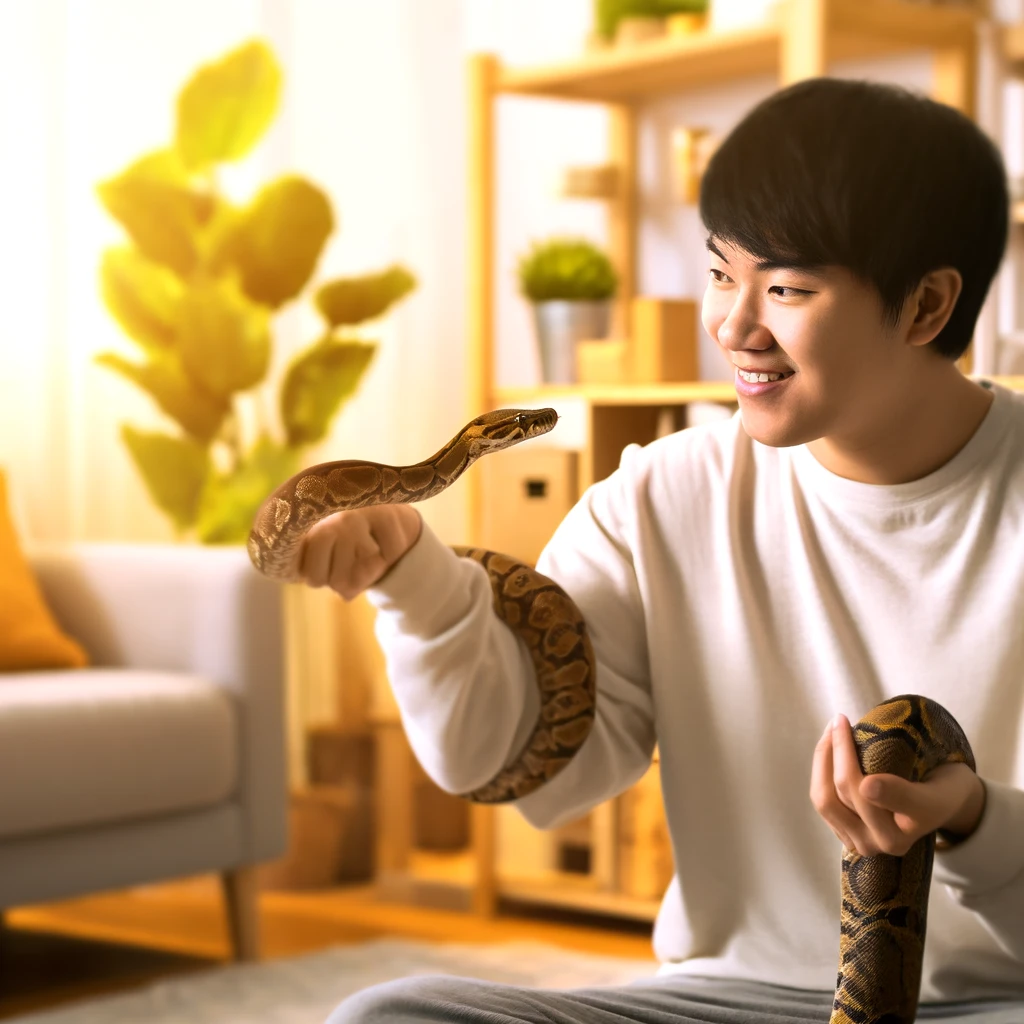
Jordan Taylor is a seasoned pet care expert and a vibrant contributor to Petmaw.com. With over a decade of experience in veterinary science, Jordan brings a wealth of knowledge and a deep passion for animals to every article. After earning a degree in Veterinary Medicine from the University of Alaska Anchorage, Jordan spent several years working in a busy veterinary clinic, where they honed their skills in pet nutrition, behavior, and wellness.
Jordan’s love for animals isn’t just professional; it’s a fundamental part of their life. Home is shared with three rescue Sloth, two cats, and a small flock of backyard chickens, each with their own rescue story and special place in Jordan’s heart. This personal connection to animals shines through in Jordan’s writing, making their advice not only expert but also empathetic and practical for pet owners.
At Petmaw.com, Jordan is dedicated to providing pet owners with the latest research, trends, and tips in pet care, from innovative feeding strategies to understanding the subtle signs of pet health issues. Whether you’re a seasoned pet owner or new to the pet parenting world, Jordan’s insights aim to enhance the well-being of pets and deepen the human-animal bond.
In their spare time, Jordan is an avid hiker, often found exploring the trails with their dogs. They also volunteer at local animal shelters, offering their expertise and helping animals in need find forever homes. Jordan’s commitment to animal welfare and passion for sharing knowledge makes them a cherished member of the Petmaw.com family and a trusted guide for our readers.

